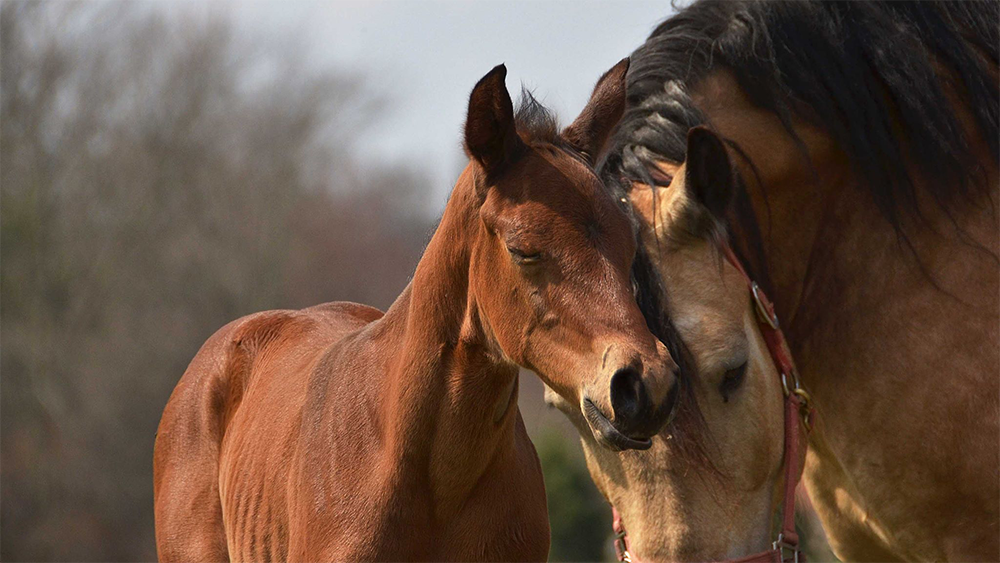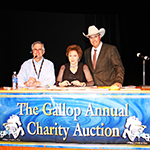As genetics, embryology, and reproductive processes advance, breed associations have been trying to keep up with ways to creatively and safely continue improving their breeds.
The approval of artificial insemination led to a safer reproductive process for the animals and also expanded stallions’ abilities to reach mares across the world. Now, embryo transfers (“ET”) are becoming a more common procedure whereby a donor mare (the genetic mother) is inseminated with the stallion’s sperm and then the embryo is flushed and placed into a surrogate mare (the recipient).
Additionally, the availability of IntraCytoplasmic Sperm Injection (“ICSI”) has added to the increasing demand for recipient mares. This process involves harvesting an egg from the donor mare, inseminating that egg with a single sperm (similar to human Invitro Fertilization), and then implanting the resulting embryo into a recipient mare.
ET and ICSI have been beneficial to strong producing mares by allowing them to produce more foals – some having multiple foals per season. These procedures have also extended a mare’s reproductive lifecycle. First, they allow her to start producing at a younger age and continue showing at a high level because she never carries the pregnancy. Second, they allow older mares that may struggle keeping a foal to continue reproducing as long as they can still create a quality egg.
Due to the scientific advances that have decreased the costs and the difficulty of the procedures, as well as the obvious benefits for great show mares and producers, associations have seen a significant increase in the number of foals born via recipient mares. Now, like with stallions, it is possible for a foal to never have any actual contact with its biological dam.
This increase in foals being born to surrogates, along with the old horseman’s adage that the mare has a greater impact on the quality of the resulting foal begs the question: what matters more…nature or nurture? Essentially, what impact, if any, does an unrelated recipient mare have on the foal she carries and raises?
We spoke to leading breeders Kim Dean (The Breeding Barn) and Debbi Trubee (North Farm) to get their perspectives on the impact of recipient mares on their surrogate foals.
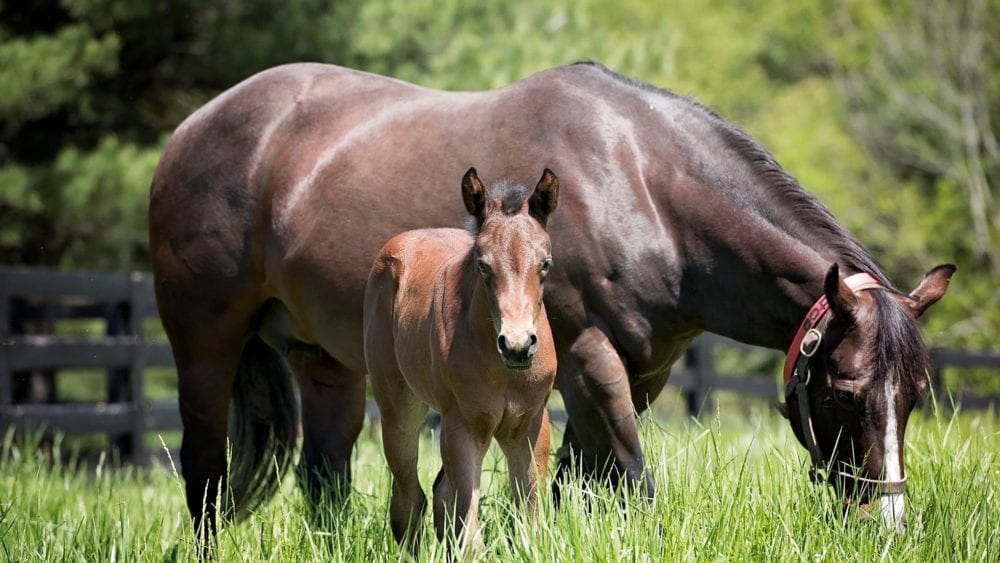
Kim Dean
As a stallion owner, manager, and breeder herself, Dean has a front row seat to the impact mares have on their foals every year. It is a common mistake to assume that, because the foal is not related to the recipient, all that matters is the surrogate mare’s ability to carry a foal to term. Indeed, her ability to raise the foal is just as crucial.
“Most breeders, given the opportunity, would jump at the chance to hand-pick a recipient mare for their baby. Bad minded, aggressive, hard to handle, overly protective mares can teach those same personality traits to their baby. The impact of a bad surrogate is made even more apparent the longer the foal stays at her side.” Therefore, Dean believes that the selection of a recipient is nearly as important as the selection of the donor mare herself.
Dean has seen a huge increase in the demand for recipient mares over the past few years within the pleasure horse industry. “We were reminded very quickly of how important good surrogates were in late March/early April of 2021 when the surge in demand paired with the limited supply of quality recipients resulted in an industry-wide shortage.” Dean recalls that, “By April 2021, there were very few recipient mares left and many of those that were available weren’t the highest quality.”
 Dean and her clients believe so strongly in the importance of using a quality recipient that many of her clients chose to freeze their 2021 embryos during the surrogate shortage. While the procedures have decreased in cost, they are not “cheap” and it was not worth the risk of implanting a valuable embryo in a low-quality mare.
Dean and her clients believe so strongly in the importance of using a quality recipient that many of her clients chose to freeze their 2021 embryos during the surrogate shortage. While the procedures have decreased in cost, they are not “cheap” and it was not worth the risk of implanting a valuable embryo in a low-quality mare.
Dean is optimistic about the future of the breeding industry with the approval of these scientific advances. “One of the benefits of having quality recipient mares is that it allows for top show mares to have foals while still remaining in training and continuing to show or compete. If those show mares are top producers, their offspring will only increase the caliber of horses in our industry moving forward.”
Dean hopes the ongoing demand for quality surrogates provides wonderful homes for mares that did not show and may not be of the quality to reproduce themselves, but are still great-minded and well-mannered. These are the exact mares that make wonderful surrogate mothers.
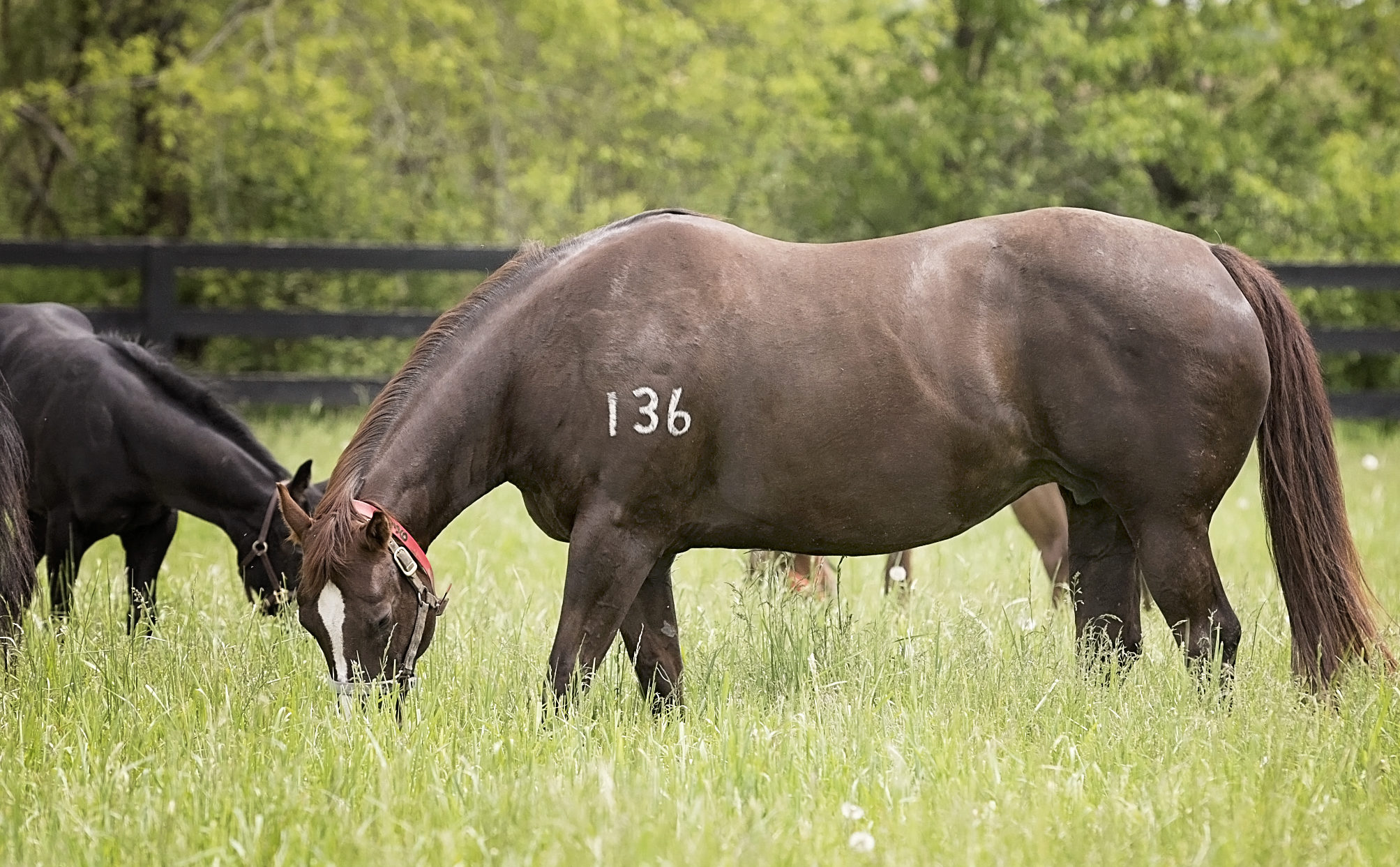
Debbi Trubee
As a stallion owner and manager, Trubee admits that she is very invested in the belief that nature plays a major role in the breeding process. However, she has firsthand experience of the obvious impact of “nurture” in the development of foals – which becomes even more apparent when using a recipient mare to raise a foal. As such, Trubee is a firm believer that a quality animal starts with the genetic component, but the way they are raised by their birth mother and how they are handled by humans plays a major role in allowing them to achieve greatness up to or exceeding their genetic potential.
Trubee has bred numerous foals that were born to recipient mares during her breeding career. Many of these foals were out of top show mares and gave Trubee the opportunity to observe the impact of a mare’s mothering behaviors on a foal, even where the foal shared no genetics with the mare.
Trubee has found that, regardless of how good-minded and sensible the genetic parents are, if the foal is born to a recipient mare that is wild or poor-mannered, the baby is very likely to mimic her undesirable behaviors.
Trubee explains, “If the mare is one that will turn her butt and try to kick at you when you enter her stall, that baby is going to want to do the same thing. Additionally, if the mare is the type that will run when you go to catch her in the field, guess what that foal will do? The exact same thing.”
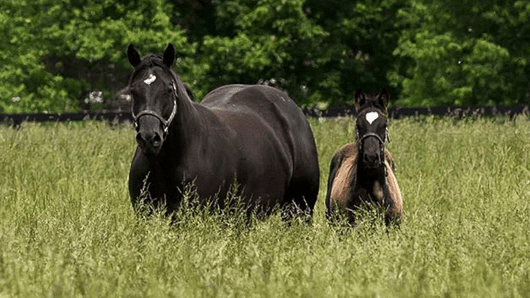 Conversely, Trubee has observed situations where the foal’s genetic dam is a more ill-tempered animal, but the recipient mare is sweet and easy-going. In these scenarios, she’s found the foals again tend to mimic the behavior of the recipient mare.
Conversely, Trubee has observed situations where the foal’s genetic dam is a more ill-tempered animal, but the recipient mare is sweet and easy-going. In these scenarios, she’s found the foals again tend to mimic the behavior of the recipient mare.
Trubee chalks this up to the fact that horses initially learn how to be a horse from their birth mother (regardless of who their genetics come from). As a result, while you may observe personality traits from the biological dam, you are far more likely to see the foal mimic traits of the actual animal they are born to.
Trubee believes so strongly in the value of a good recipient mare that North Farm will keep those mares that they’ve had good experiences with. These lucky ladies will become career recip mares for the farm and are treated like any of the other top broodmares at the facility. These retained recipients have given birth to Congress and World Champions for mares that are busy showing, producing multiple foals per year, or are terrible mothers in their own right and need a recipient to do the “dirty work” for them.
Trubee acknowledges that many breeders are not breeding on the scale of North Farm and likely will not have much of a choice in what mare will carry their special foal. She advises that people who get a recipient mare that is wild, difficult, or has a bad attitude to take the effort to invest in working with her prior to her delivery.
“From the minute that foal hits the ground, they are learning from their mom,” Trubee emphasizes. “So, you want a mare that will set your foal up for positive human interactions from day one. With horses and in life, it is always harder to redo something that could have been avoided by putting in the effort up front.”
***
Because of the impact that recipient mares seem to have on the resulting foals, our experts advise trying to secure a recipient that (1) is easy to handle; (2) allows multiple people access to her foal; (3) is a calm, good-natured individual; and (4) is willing to discipline a naughty foal, but still gives them some amount of independence. Also, due to the practical nature of breeding and foaling, the ideal recipient mare will be one that has (1) foaled before; (2) foals easily; (3) is a good milk-producer; (4) between the ages of 4-10, and (5) has good size (such that a larger foal will pose fewer risks).
While you don’t have to be as picky when selecting a recipient (and sometimes the nature of the process itself makes it impossible to be picky), it is important to remember that recipients will affect the resulting foal. Therefore, while she doesn’t have to be pretty, well-bred, or even registered, the recipient should be a good momma that will help contribute positively to the first months of your foal’s life.


